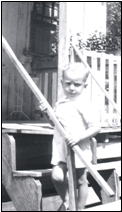
|
††† The new Chevrolet Camaro is a winner, by one definition, a sleek modern muscle car with modern technology and good gas mileage, priced within the market, a worthy successor to the venerable nameplate. Go get one and have fun driving. ††† Is the Camaro the model that will lead GM out of the wilderness and back into profitability? ††† No. ††† Sorry, GM. A niche car, even one with the response Camaro is generating, is not the future of American automobiles. A muscle car is not the future. The Volt, should it make it to the market, will be a big step in the right direction for the future, but itís primarily an urban vehicle. Around here, weíll still need trucks of all sizes and cars we can afford to buy and afford to drive. ††† Looking around on the internet I found some tentative plans for the Chevy Impala, right now cheaper than the Camaro or Malibu, to become a rear-wheel drive high horsepower vehicle based on an Australian GM, a higher priced model, over $30,000, to boost profits. ††† While I loved the original Impala and sort of salute the return to performance, I wonder again if the leaders at GM are catching on to the concept that if their corporate performance doesnít improve they will no longer exist. ††† GM should offer a four cylinder version of the Camaro, maybe with a turbo, or a hybrid. A 40 mpg model.† With all the taxpayer money GM has taken already, the giant carmaker is obligated to make an effort toward developing vehicles that are cleaner, greener, and of high enough quality to get back the buyers lost over the decades to Honda and Toyota. ††† The upstart Kia corporation is selling new cars for under $10,000. ††† While that number that large was impossible to comprehend 40 years ago, except for a huge luxury sedan, it has been years since we saw new vehicles priced so low. ††† American carmakers built their dominance by making cars we could afford. Lots of them. While there has always been and always will be a market for the Corvette and Camaro, the Chevy Bel Air, Chevy II, Chevelle, and Caprice hauled Americaís families before the SUV was invented. ††† All new vehicles are safer, more comfortable, and more reliable than the legendary cars of the 50s and 60s, but the new models donít have much personality. Itís harder than ever to distinguish one brand from another, and all NASCAR race cars are identical under the skin. ††† Maybe one reason people donít buy new cars as often now is that they canít tell any difference from year to year. They look the same. Go back and look at a í55, í56, í57, and í58 Chevy and see what I mean. Each model year is distinctive. Look at Fords and Dodges from the same era. You will not confuse the brands. ††† The annual introduction of the new models was a much awaited celebration. ††† The hoopla over the new Camaro is reminiscent of the old excitement, but itíd be lots more fun if all the new models were showcased at the same time. ††† Maybe the new Buick made in China and Mexico will get a grand introduction. Most GM engines have been made in Mexico for years, so that part is no surprise. Again, itís a weird case of using American tax dollars to stay afloat by building cars overseas. ††† It is literally impossible to find a totally American-made vehicle from any company, though probably the Camry comes as close as any. ††† Iíd like to have a new Camaro, as a high performance toy, maybe as a modern replacement for the aging Mazda Miata we keep around. ††† Which, if anybody is interested, could be purchased; itís a rare automatic transmission Miata, a 1993 with just under 120,000 miles and a spanking new top. Everything works, it is rust-free, and itíll go fast enough and loud enough to please just about anybody. ††† Iíd swap for a new Camaro, no boot needed.
|

|
Shown above on the steps of the familyís mountain home, the author† was introduced to a class as ďthe most Appalachian person I knowĒ by a professor, and the description fits. ††† Barker is the third of nine children of a farmer and carpenter, and he grew up working, reading, roaming the woods, and learning about his past and present culture. ††† He has written three short story collections: Fire On The Mountain, Mountain Passage & Other Stories, and All Night Dog, plus a novel, Copperhead Summer, and a book of poetry, Bitter Creek Breakdown.† |
